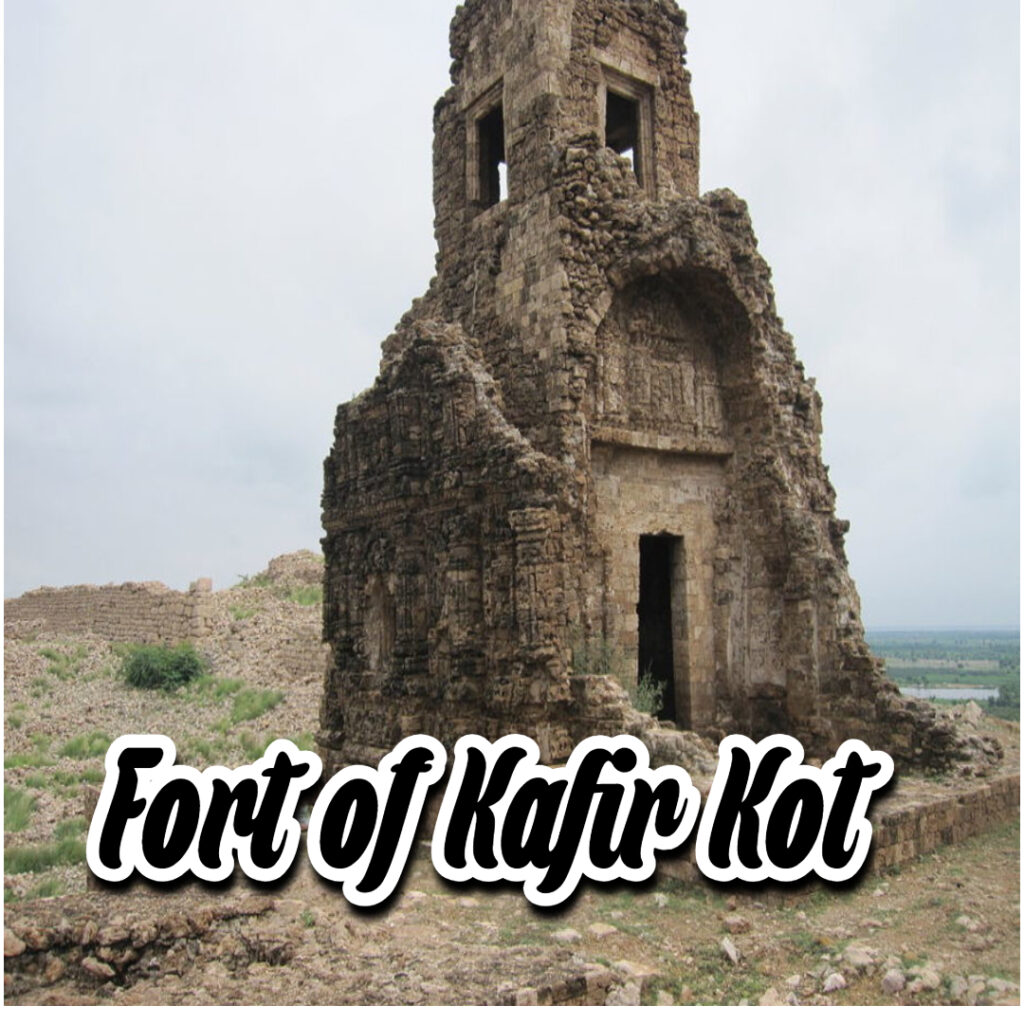Guardian of the Indus; The Allure of Kafirkot

In the rough ground of the Dera Ismail Khan District of KPK in Pakistan lies the ancient ruins known as KAfir Kot. This historical complex, rich with remnants of an era long past, encompasses the ruins of five temples and a formidable fort, standing as a testament to the region’s deep-rooted history and cultural diversity.
Kafir Kot, often differentiate as the “northern Kafir Kot,” is located near the Chashma barrage, strategically positioned to overlook the Indus River. Its geographical location underscored its dual role as a defensive stronghold and a center of cultural exchange. The proximity to the river facilitated the transportation of unique construction materials, which enhanced the architectural uniqueness of this site.
The architectural wonders of Kafir Kot complex reflect reflects the insights and artistry of its builders. Two forts, strategically positioned at top of small hills, from the core of the complex. The outer walls constructed by rugged stone blocks for defensive purpose. The unique honey-combed drab-colored stone used in construction, transported from Khushalgarh via the river, adds to the enigma of Kafir Kot’s architectural legacy.

Kafir kot is not a single temple, it’s a complex. It is distinctively separate from another site known as the “southern KAfir Kot,” located in the town of Bilot Sharif, 35 kilometers to the south. This differentiation emphasizes the historical and geographical complexity of the region. Inside the fort, three temples stand as intrigue structure.
The complex is shrouded in mystery, it served as an ancient Hindu temple and fort, blending spiritual recognition with military powers. Native said, two Hindu rajas, Til and Bil, who supposedly occupied these forts, but the traces of their rule have faded into the annals of time. The remnants of this once-thriving complex have persisted, offering modern generations a glimpse into the historical tapestry of the region.
If you go from Mianwali to Dera Ismail Khan, crossing the Chashma Barrage, a turning point adjacent to the Toll Plaza marks the route. To the right lies the River Indus, and on the left, the mountains. The Kafir Kot Fort stands at the border of Dera Ismail khan and Mianwali districts, a location of great military significance in ancient times.

The journey to Kafir Kot with the road leading through the town of Kundal to Esa Khel, Lakki Marwat, and Bannu. The ancient path, laden with tales left by Aryans, Kushans, Ghaznavids, Mongols, and Mughals, unfolds the historical significance of the region. As a traveler reached at the fort, a steep hill reveals the remains of a grand ancient gate, a testimony to the challenges faced by those who once required entry. Beyond the gate, there is a vast plain area approximately one and a half square kilometers in area, adorned with buildings offering amazing views – a testament to the architectural mastery of its builders.
Kafir kot’s visit offers a traveler to unravel the mysterious of the past where ancient temples paint a vivid picture of bygone era. Its geographical position, architectural uniqueness and legacy beyond borders make it a captivating destination.




